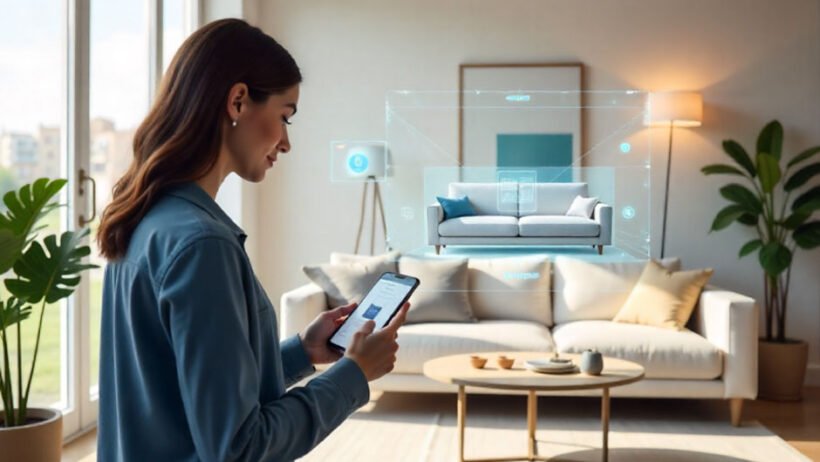Shopping online has always been about convenience, but in recent years a new trend has emerged that promises to bring the tactile, visual, and emotional depth of in-store shopping into the digital world. 3D ecommerce allows customers to interact with lifelike, three-dimensional models of products, helping them understand size, scale, texture, and function before they buy—bridging the trust gap that traditional flat images often fail to address.
From Static Screens to Interactive Worlds
The earliest days of ecommerce were simple: product pages featured a photo, a short description, and a price. This was sufficient in the 1990s when the novelty of shopping online outweighed the drawbacks. But as consumer expectations have grown, retailers have had to evolve. Flat images and text descriptions no longer satisfy buyers who want certainty before they click “purchase.”
3D ecommerce steps in to meet that demand. Instead of just seeing a pair of sneakers from one angle, shoppers can rotate them, zoom in to examine stitching, and even view them in augmented reality (AR) to see how they’d look on their feet or in their homes. It’s a leap from two-dimensional browsing into an interactive, engaging world.
Why 3D Matters for Retailers
The benefits of 3D ecommerce are not limited to customer delight; they have measurable business impact. Studies show that interactive 3D models can increase conversion rates by up to 40% and reduce product returns significantly. Why? Because customers feel more confident in their choices when they fully understand what they’re buying.
Take furniture as an example. A sofa in a stock photo might look appealing, but it’s difficult to gauge whether it fits in a living room or matches the décor. With a 3D model, the customer can virtually place the sofa in their own space using AR. That confidence translates to fewer mismatches and fewer costly returns.
For retailers, this means higher customer satisfaction, better margins, and a stronger brand reputation for innovation.
The Technology Driving 3D Ecommerce
Several key technologies are fueling the rise of 3D ecommerce:
- 3D Modeling and Scanning– Advanced tools now allow for detailed, photorealistic renderings of products. Retailers can either design these models from scratch or use 3D scanning technology to capture real objects.
- Augmented Reality (AR)– AR integrates digital objects into a shopper’s real-world environment via smartphones or AR glasses. Fashion brands use AR to let customers “try on” clothes virtually, while home décor companies let buyers visualize furniture in their rooms.
- Virtual Reality (VR)– Although less widespread than AR, VR offers fully immersive shopping environments. Imagine entering a virtual store, browsing shelves, and interacting with products as though you were physically there.
- Web-Based 3D Viewers– Modern ecommerce platforms support embedded 3D models directly in browsers, requiring no downloads or special apps. This accessibility is crucial for widespread adoption.
Use Cases Across Industries
3D ecommerce is making waves across multiple industries:
- Fashion and Apparel– Virtual fitting rooms let customers see how clothing drapes on their body type, improving sizing confidence.
- Furniture and Home Décor– Shoppers can test different layouts, styles, and colors in their own homes before committing.
- Automotive– Prospective buyers can explore every angle of a car, customize interiors, and preview upgrades without stepping into a dealership.
- Electronics– Detailed 3D product explorations showcase ports, buttons, and finishes more effectively than static images.
- Luxury Goods– High-end jewelry and watches can be presented in 3D to highlight intricate craftsmanship and justify premium pricing.
Overcoming Challenges
While the benefits are clear, implementing 3D ecommerce does come with challenges. Creating and maintaining accurate 3D models can be resource-intensive, particularly for brands with large inventories. Additionally, delivering these experiences requires balancing high-quality visuals with fast load times—a technical challenge for websites aiming to keep bounce rates low.
There’s also the question of accessibility. Not every shopper has the latest smartphone or VR headset, so retailers must ensure that 3D experiences degrade gracefully to 2D options when needed.
However, as tools become more affordable and user-friendly, these hurdles are rapidly shrinking. Platforms like Shopify, Magento, and WooCommerce now offer plugins that simplify integration, while companies specializing in 3D model creation provide scalable solutions.
The Future of 3D Ecommerce
Looking ahead, the growth trajectory is clear. As younger, tech-savvy generations become the dominant consumer base, immersive shopping will be less of a novelty and more of an expectation. Retailers that fail to adapt may find themselves left behind.
Artificial intelligence is likely to enhance the field even further. Imagine AI-driven personalization where a system automatically generates a 3D visualization of a sofa in your favorite color and size, placed directly into a digital twin of your living room. Combined with emerging technologies like the metaverse, 3D ecommerce could evolve into full-fledged virtual shopping malls where social interaction and commerce blend seamlessly.
Conclusion
The story of ecommerce has always been about closing the gap between digital convenience and physical experience. 3D ecommerce represents the most significant leap yet, enabling shoppers to not just see but truly experience products before buying. For retailers, it’s an opportunity to increase trust, reduce returns, and stand out in a crowded marketplace.
As technology becomes more accessible, one thing is certain: the future of online shopping won’t be flat. It will be three-dimensional, interactive, and immersive—a future where 3D ecommerce is no longer an optional feature but a fundamental expectation.








